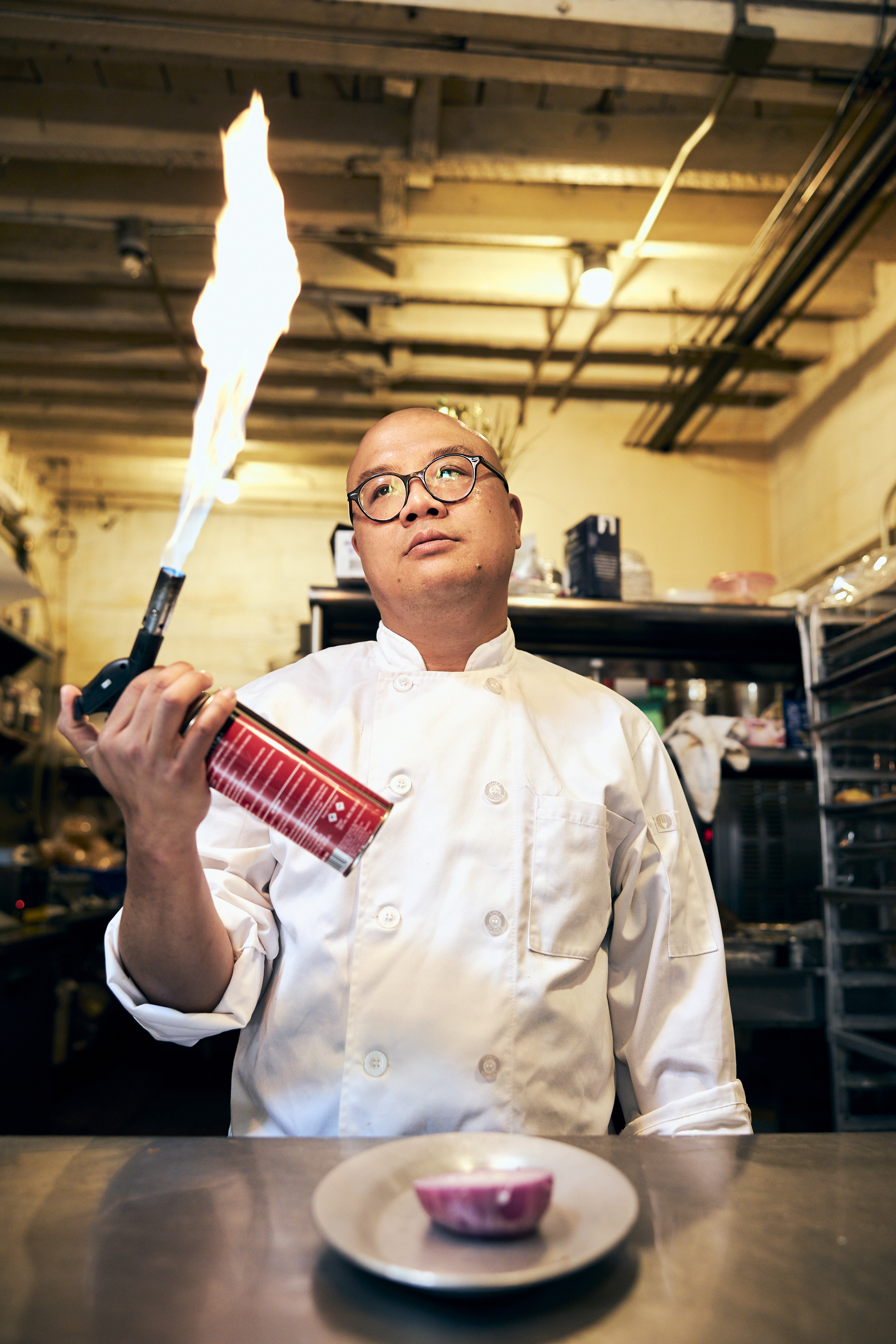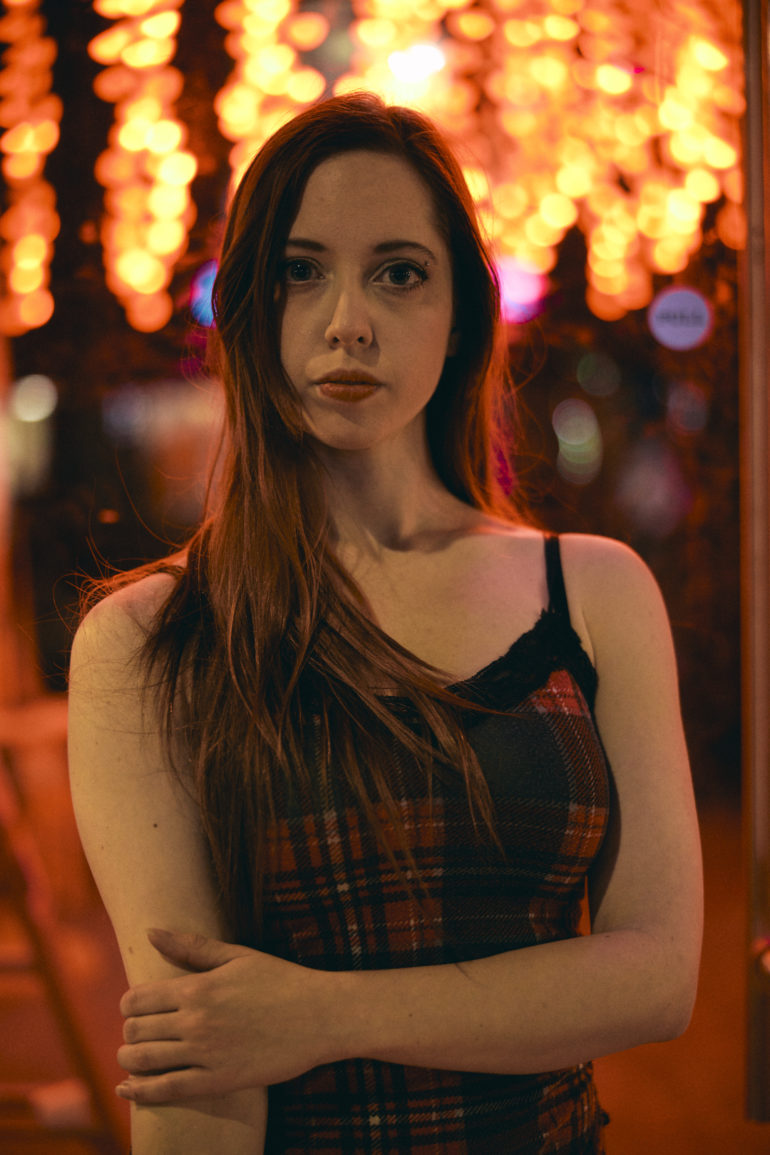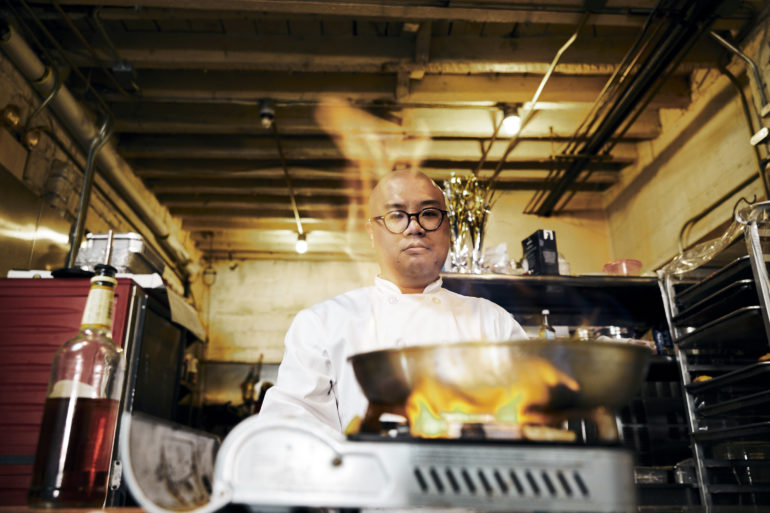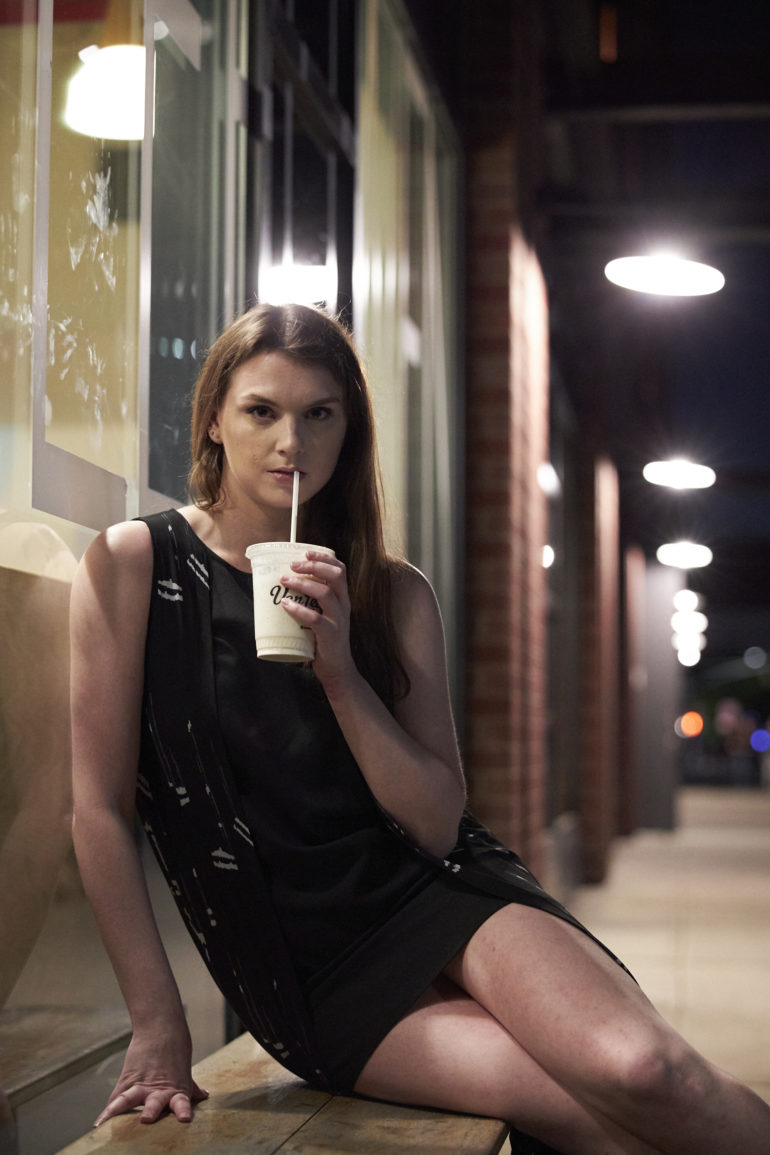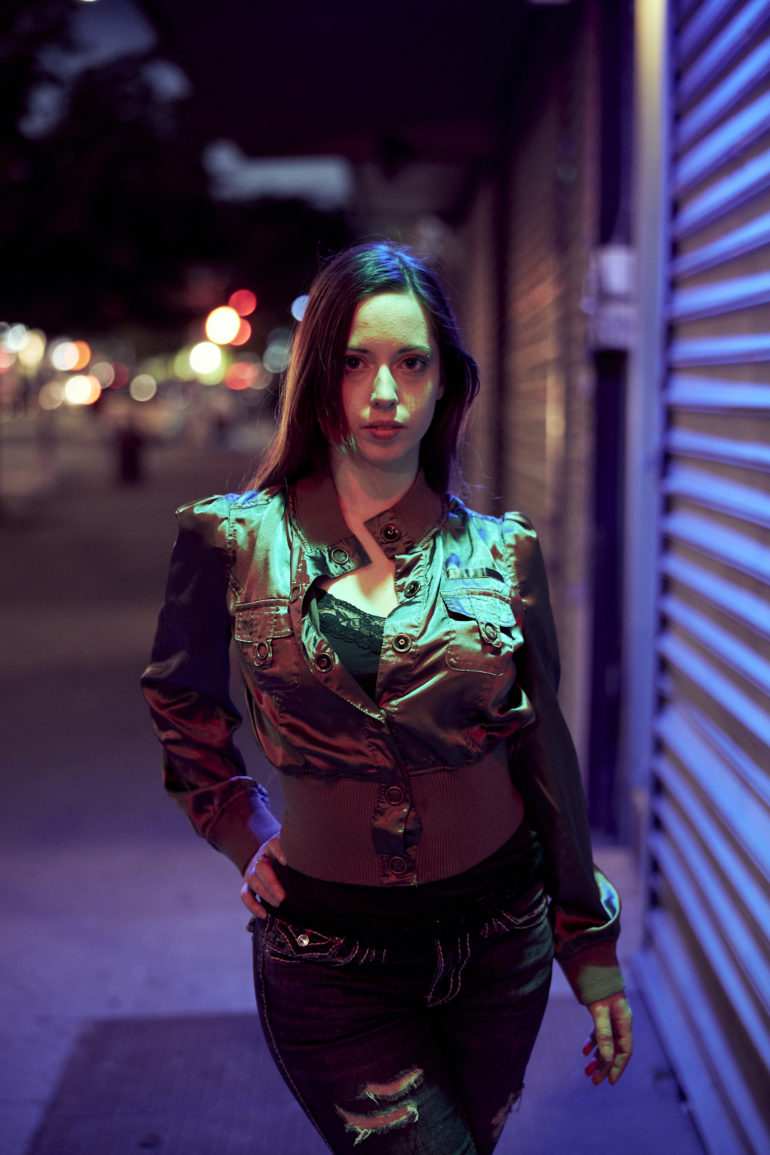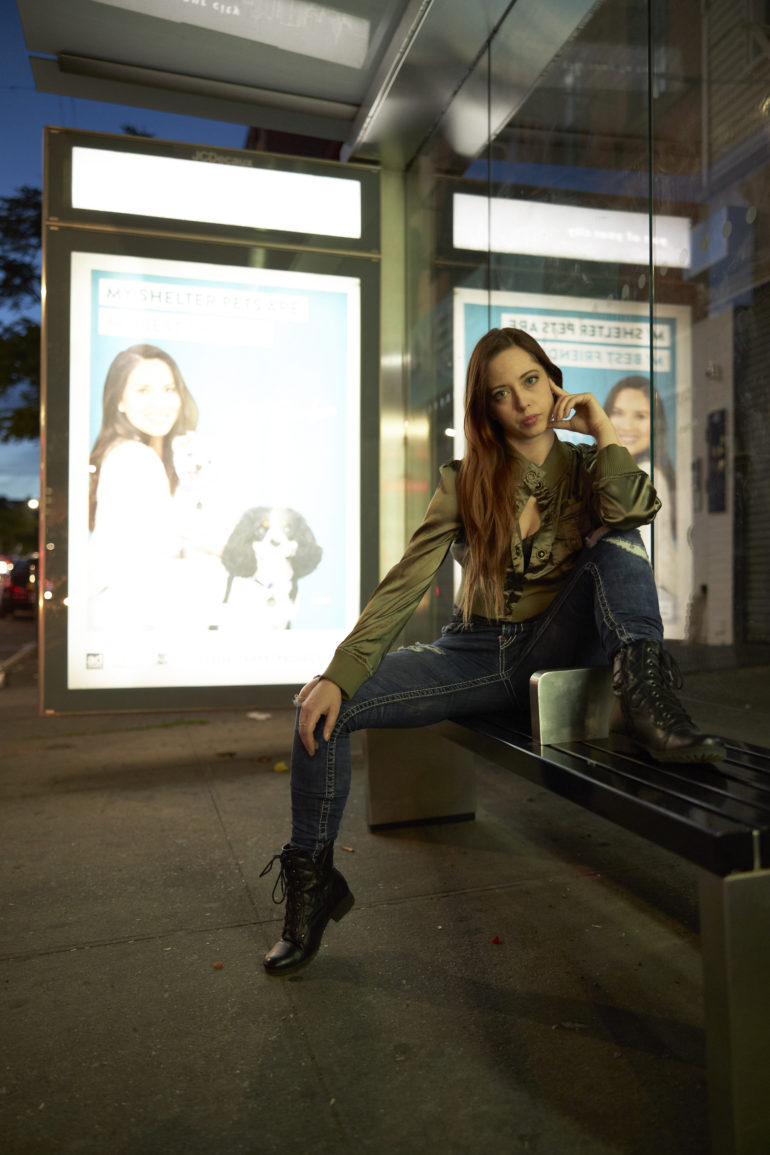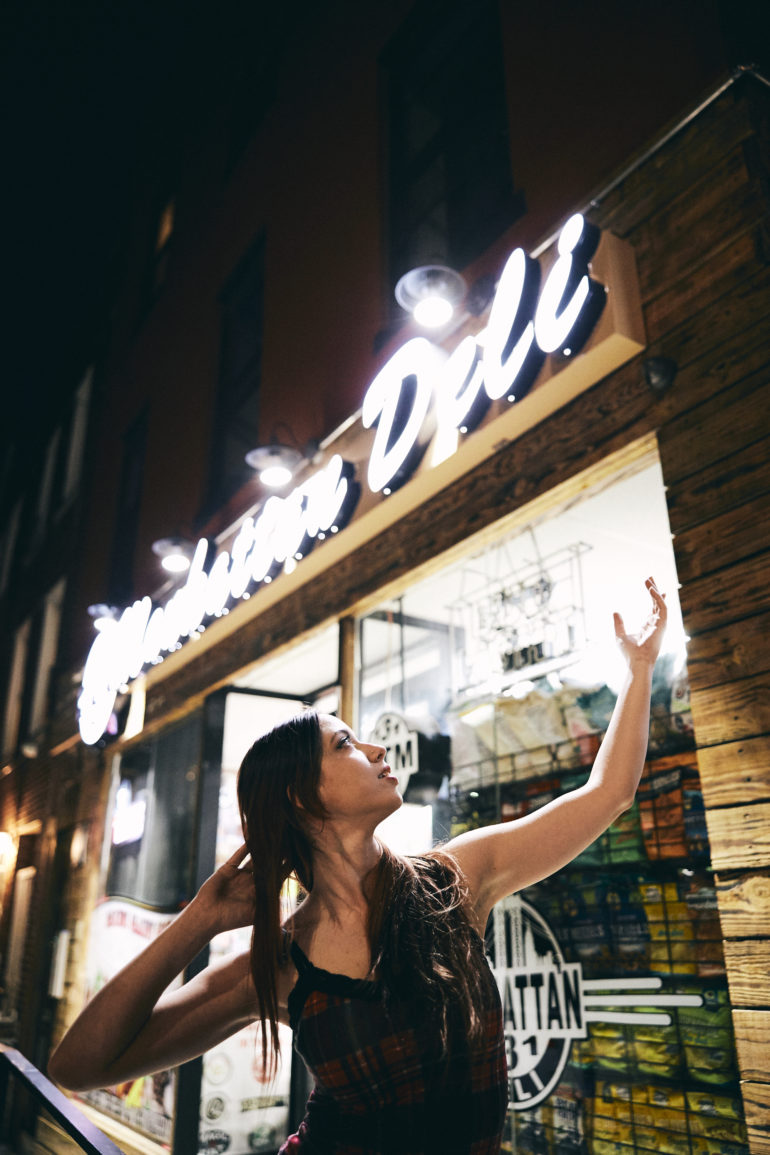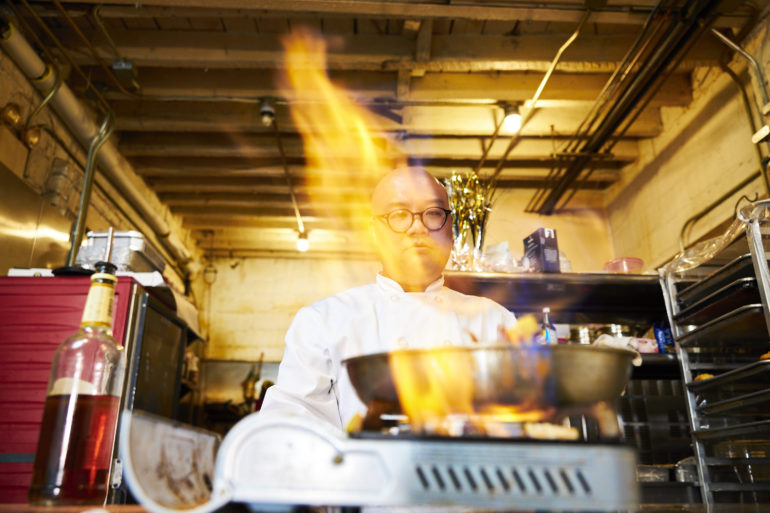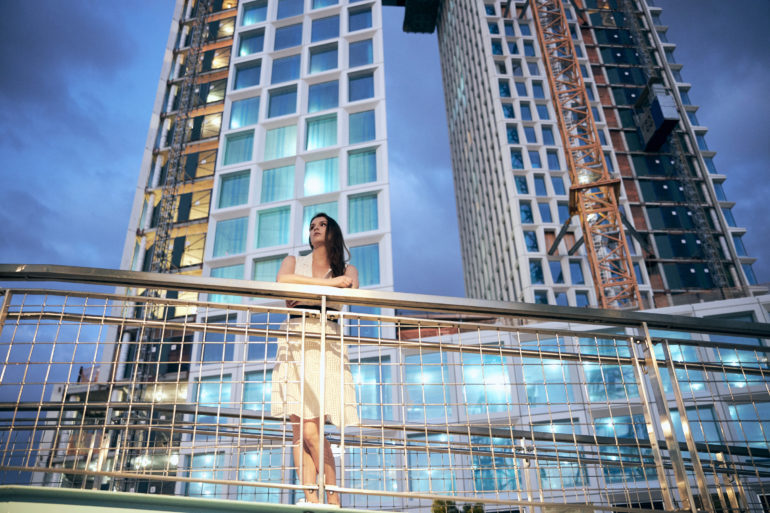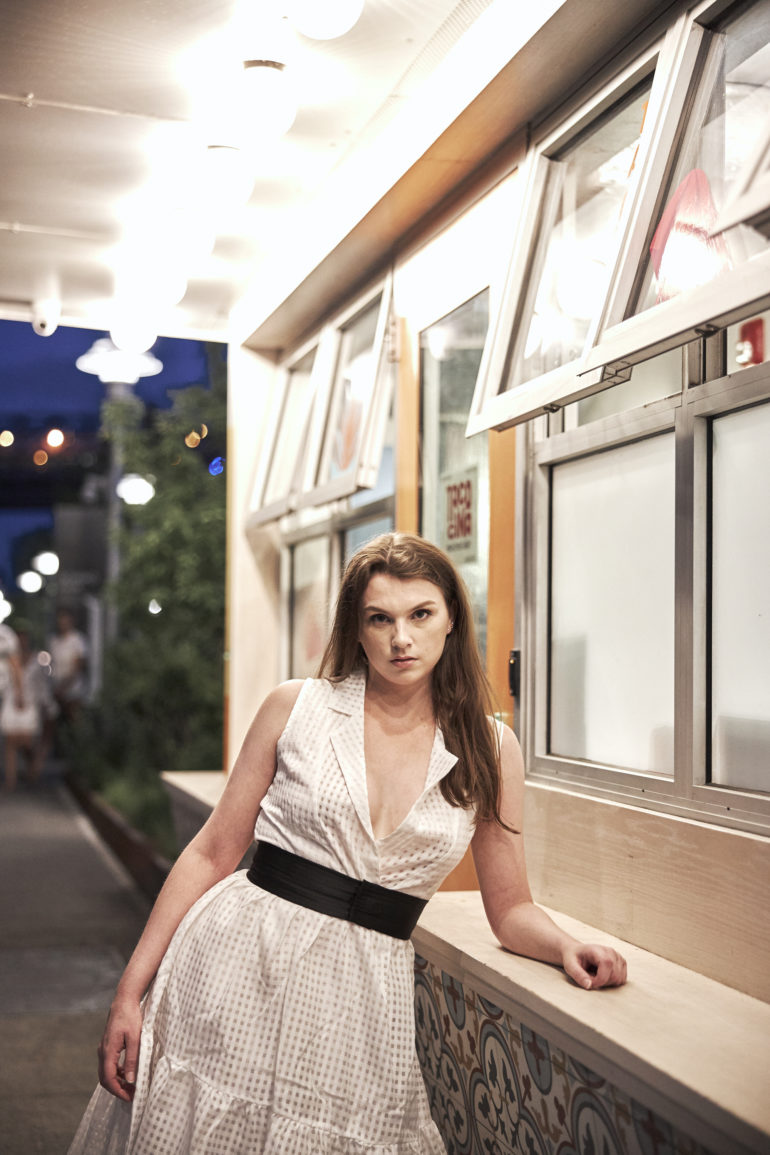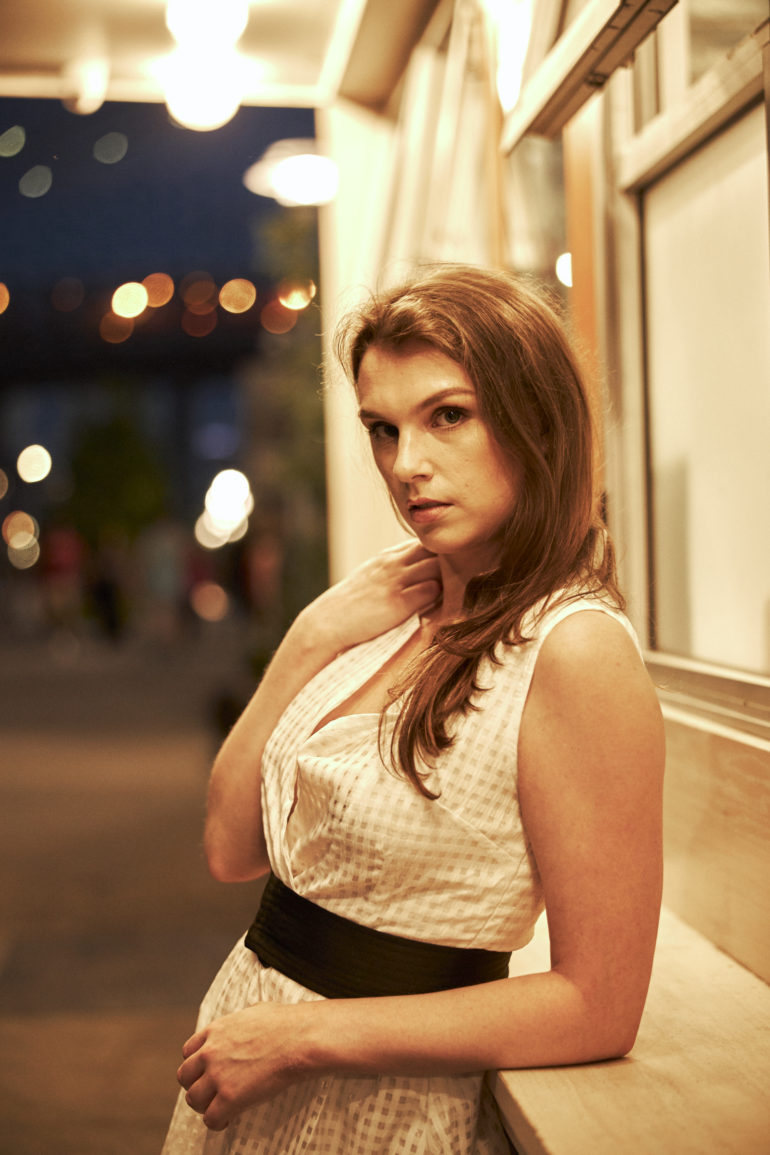Last Updated on 06/20/2019 by Mark Beckenbach
Low light portraiture is difficult unless you know how to adapt to your environment very well.
“Shoot wide open.” This is probably a bit of advice that you’ve heard when shooting low light portraiture. The great news is that you don’t need to use a flash to get a portrait that pops and makes people stare. Instead you can use a lot of the lighting that’s around us. Humans create a ton of lighting in various places at night, and with a bit of creative freedom and thinking, we can make lights work for us. Lots of photographers reach for prime lenses at night, but in recent years new lenses like the Canon RF 28-70mm f2 L USM with a very fast aperture throughout the entire zoom range have popped up. By and large, these lenses are changing the way photographers operate at night in low light situations where they can’t use a flash or bring lighting with them. And best of all, this means you can focus on bigger things like working with your model, and adapting to the lighting and the colors in the scene.
A Word About Shutter Speeds
Fact: It’s difficult for lots of photographers to handhold a camera and shoot below 1/25th of a second.
The above fact is very important when working on shooting portraits in low light. More often than not, it’s a good idea to overexpose your frame to give the image the most light possible. When shooting a portrait, this can mean giving a subject’s face more frontal illumination and therefore making their skin look better in-camera. You’ll be overexposing anywhere from 1/4 to a full stop or so. Adding in the extra light also means that you’ll get less image noise on the sensor when you print or edit your image.
One of the best things about having a zoom lens is the convenience it offers with being versatile in the focal lengths offered. For years, photographers were only limited to f2.8 when working in the dark with full frame cameras. But with the Canon RF 28-70mm f2 L USM, photographers are getting a whole extra stop of light. That means that instead of shooting at 1/25th, you can shoot at 1/50th of a second, which is much more manageable. When shooting in low light, any photographer will go for shooting at ISO 400 and above. With Eye-AF in the Canon EOS R and Canon EOS RP, the photographer can have confidence in acquiring sharp focus even when shooting at wide apertures such as f2.0.
So here are a few tips about shutter speeds when shooting portraits in low light:
- Overexpose the image a bit to make your subject’s skin look better. You can combine this with locking your white balance for even better results that you can beam over to your phone using the Canon Camera Connect App.
- You don’t need to stop your lens down. With the Canon RF 28-70mm f2 L USM on the Canon EOS R, you’re going to get a look unlike anything else. How many 70mm f2 lenses do you know of?
- Raise the ISO up a bit. If you’re having trouble handholding the camera, raise your ISO up a bit and make the shutter speed a bit faster. Just as long as you’re getting a bit of extra light on a subject’s face you’ll be all set.
- Tuck your elbows in. With a lens like the Canon RF 28-70mm f2 L USM, you’re going to need to stabilize your image. So keeping your body moving as little as possible can help with this.
Ideas for Ambient Sources of Light
First off, let’s talk about how to shoot in low light. You’ll need to find ambient light sources that can deliver a pleasing look. Some of our favorite examples:
- Street Lamps
- Window Displays
- Neon signs
- Candles
- Fairy lights
- The screen of a phone
- Car headlights
Always remember: the larger the light source is in relation to the subject in the frame, the softer the light will be. That means that a window display will give off a ton of soft light, but a street lamp’s small window won’t be all that soft.
Pro Tip: If you’re looking for the cinematic look, then consider your camera’s white balance. Is the light around you very warm? Then balance to 3200K Tungsten or lower. If the light around you is very cool and neutral, then try going for a warmer balance like 5200K Daylight. This method is bound to create contrast in the light and deliver a look you’re going to love.
Chasing the Light and How to Deal with Mixed Lighting
One of the biggest difficulties that come with shooting portraits in low light is relying on the lighting around you and nothing more. That can sometimes mean that your colors look a tad wacky. The color science inside of the Canon EOS R is exceptional; when it comes to rendering skin tones it’s very difficult to beat. With the way photography generally works, dealing with mixed lighting situations is tricky. Luckily in the past few years, new methods have come up involving post-production. However, you can do it all in-camera. Then, when using your Canon EOS R with the Canon RF 28-70mm f2 L USM attached, you can beam your favorite images to your phone and then directly to Instagram as a teaser.
So how do you deal with this while working with ambient lighting and without a lot of post-production? The answer is in your white balance and by identifying the main colors within the scene you’re shooting. All good portraits usually focus on three different colors:
- The color of the person’s skin
- The color of the person’s attire
- Whatever color is in the background
All of these colors typically have enough contrast or distinction to truly separate them from each other. If your Canon EOS R is rendering the image to look a certain way, then try manually switching your white balance to either 5200K Daylight or 3200K Tungsten. If you see Edison bulbs, then Tungsten will normalize the image by making it look cooler while making the background (which could be daylight colored) emphasize the subject.
One of the biggest trends right now is shooting portraits with neon lighting. With the Canon RF 28-70mm f2 L USM, you’ll get the versatility of a zoom lens with the fast aperture of a prime lense. What that means in real life practice is that when you’re shooting with neon lights in the scene, you’ll get to work with a lot more light at a lower ISO. Neon lights give off most of their “pop” at night. But at night, you’re limited to your ambient lighting and you don’t have to be with the Canon RF 28-70mm f2 L USM.
The Wide Angle Portrait
One of the awesome things about using a zoom lens such as the Canon RF 28-70mm f2 L USM is that you get a variety of focal lengths at the wider angles offered to full frame shooters. Naturally, wide angles lend themselves to a specific style of portraiture called the Environmental Portrait. These are portraits that put people in a specific place that also tell a story about them. They’re popular amongst photojournalists and documentary shooters. Most people who work indoors don’t have as much light as outdoors. So if you’re trying to go for a simpler portrait or capture something candidly, working with ambient lighting is usually the best route. With the f2 aperture on the Canon RF 28-70mm f2 L USM, a photographer can use the wide angle end of the lens to include an entire scene while also offering a bit of selective focus on the subject.
Understanding Posing, Contrast, and How They Relate to Each Other
One of the things everyone needs to understand about shooting with neon lights in low light has to do with contrast. No matter what, the contrast of the lighting will always be strong and you’ll need to either find a way to negate it by using colors and exposure, or embrace it. The reason for this is because you’re dealing with primarily one light source. The positioning of the light source in relation to your subject will create either more or less contrast. You, as the photographer, will need to pay attention to how this makes your subject look. With the Canon RF 28-70mm f2 L USM, at least you have a variety of looks in a single lens with shallow depth of field–more so than any other full-frame zoom lens ever made. Here are a few ideas to keep in mind:
- 28mm: Shoot from below and pull back a lot. Go for a full body image. If you’re doing this, then embrace the neons and lights that you find. Generally speaking, at wider focal lengths, much more can go wrong with portraiture. Strive to do this if you can get a larger, softer source of light like a window display.
- 35mm: You can go ahead and get on eye level with your subject. When using your Canon RF 28-70mm f2 L USM, shoot wide open. Again, go for softer light.
- 50mm: Here is where you’re going to get the most versatility. The 50mm field of view renders a scene that allows you to go either way with framing and lighting.
- 70mm: The same for 50mm. But arguably, this focal length will render hard shadows the best due to how it provides a flattering perspective no matter what.
When you’re doing this, keep in mind that the Canon RF 28-70mm f2 L USM can be a heavy lens. But luckily, the Canon EOS R has a screen that flips out and to the side. You can shoot with the camera tucked in at your chest with the screen out and still get the stability you need when shooting at slower shutter speeds.
Editor’s Note: This is a sponsored blog post from Canon.


